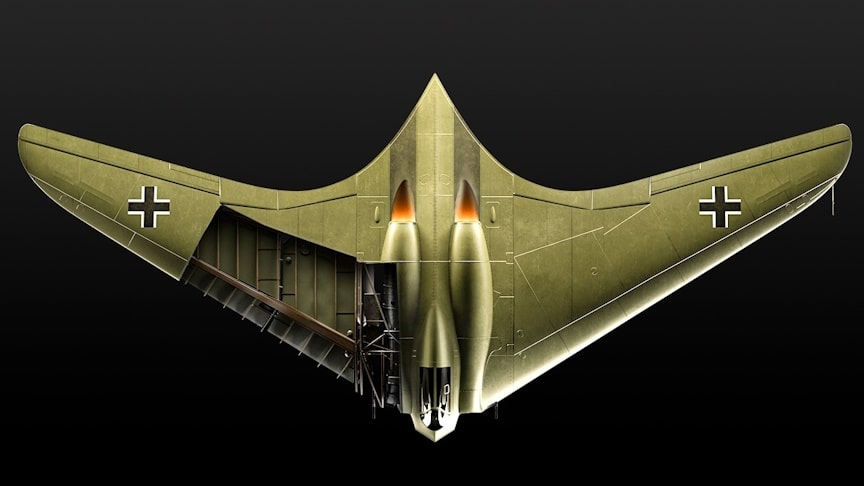The Horten Ho-229 was the world’s first jet-powered flying wing. This was the third prototype of this advanced German aircraft that never saw combat. It was developed in the late stages of the WW2 when Germany desperately needed new weapons to change the course of war. The design of the Ho-229 was an attempt to produce a fast and highly maneuverable jet.
source.image: Blue Paw Print
In the decades after the war the aircraft became famous for its unusual shape and resemblance to the modern, B-2 stealth bomber, sparking questions about its alleged stealth capabilities. But was it really stealth? In this film we will answer this question, and show you how it was constructed eight decades ago. The plane was powered by 2 Junkers Jumo 004 B-2 turbojet engines, 900 kg (1,989 lb) thrust.
The outer wings were skinned with thin plywood panels that were glued together with a sawdust mixture and covered with fireproof paint. The wing had a single main spar, penetrated by the jet engine inlets, and a secondary spar used for mounting the elevons. It was designed with a 7g load factor and a 1.8× safety rating giving the aircraft a 12.6g ultimate load rating.
Advertisement
The aircraft was fitted with retractable tricycle landing gear, with the nose gear on the first two prototypes from a Heinkel He 177’s tailwheel system, with the third prototype using an He 177A main gear wheel rim and tire on a newly designed nose gear leg. A drogue parachute slowed the aircraft upon landing.











